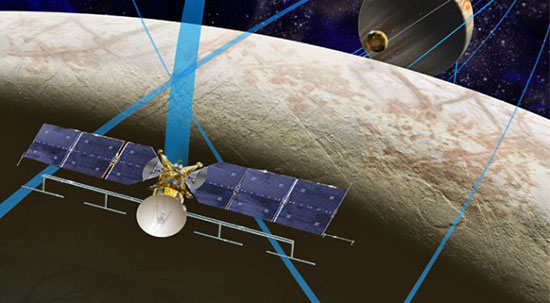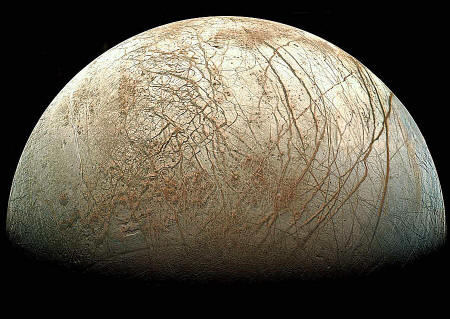|
from
ExtremeTech Website
The space agency even got more funding that it asked for, including $100 million earmarked for the planning of a mission to Jupiter's moon Europa.
NASA now plans to request an additional
$30 million to fund the preliminary study of a plan called Europa
Clipper, which could be mankind's first step toward finding out if
there's any life in Europa's vast subsurface oceans.
Scientists have long suspected that the network of cracks in Europa's ice sheet could indicate a large volume of water underneath, and recent analysis of magnetic field data from the Galileo probe seems to confirm there is a salty ocean down there.
Europa is far enough out in the Solar
System that the Sun is unable to heat water above freezing, hence
the ice sheet on the surface estimated to be 100 kilometers (62
miles) thick.
However, the technology to do that is still decades away. That's not to say NASA isn't thinking about it. There are concept studies being performed on various robots that could conduct exploration of a subsurface ocean like the one thought to exist in Europa.
The
Europa Clipper is NASA's first
step, though.
That probe has performed a number of approaches to Saturn's moon Titan, which is famous for having expansive lakes of liquid hydrocarbons and a thick atmosphere. Europa Clipper would settle into an orbit around Jupiter that allowed it to make multiple flybys of Europa at various distances.
The closest passes would be just 25
kilometers above the surface.
It will likely also carry a special
double shielded "vault" where the most sensitive equipment will be
housed.
Any life in Europa would be shielded from Jupiter's radiation by the water. The proposed NASA mission would carry out spectrographic, topographic, and magnetic studies of Europa.
Of particular interest is what causes the reddish coloration of Europa's fissures.
Is it organic material? There's only one
way to find out.
The total cost is estimated at $2.2 billion.
|



